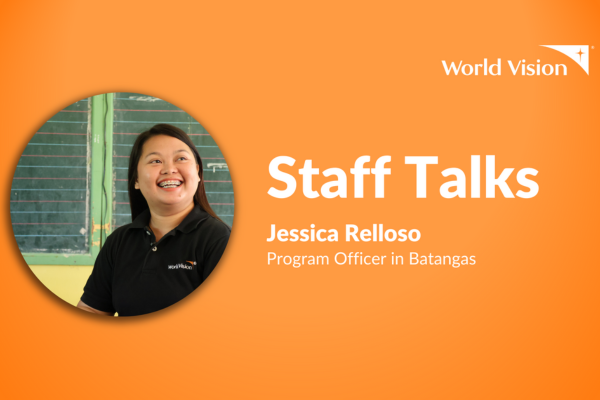Haiyan: One Year On
From Emergency to Recovery
On November 8, 2013, the world’s strongest typhoon ever recorded devastated the Central Visayas region of the Philippines. Over 6,000 fatalities have been recorded, with close to 2,000 missing. The disaster has affected an estimated 14.1 million people and left 4 million displaced1. World Vision declared a global response, deploying local and international staff. The relief response initially targeted to assist 400,000 people (80,000 families) but eventually reached over 700,000 people. The ongoing recovery and rehabilitation phase will assist 14,000 families with shelter, livelihood, education, health, water, sanitation & hygiene (WaSH), health and disaster risk reduction (DRR).
This book ushers us back to the tremendous challenge and misery faced by the survivors and brings the spotlight on the courage and grit of Filipinos despite the odds against them. Our hope is for us to learn from their stories and be inspired with their resilience. As one community declared – we are stronger than Haiyan.
Read: Haiyan Year Two
Featured:

Waiting for Wednesday – An Escape from the Aftermath
Five-year-old Roland Joseph (RJ) escapes his family’s tent and chases his little brother Zai Jian – a melody of laughter trailing them through the makeshift neighbourhood of white tents. As the boys run, their mother Aylene cups her hand around her chin, a worn out expression crossing her face. She’s waiting for Wednesday, a day that will free her from stress – even if just for a few hours.
Aylene sighs surveying her family’s new home – a field with overgrown grass, dotted by relief tents. Families moved here after the nearby secondary school restarted classes. The school, which served as an evacuation centre during Typhoon Haiyan, is where Aylene’s family of eight lived for nearly a month after the storm. “The most important thing is the family is safe,” Aylene says quietly. Aylene and her husband Joseph have six children in total, ranging from ages 14 to three.
Storm over, but not forgotten
“During the storm, we hid under a bed in the school. We felt the walls moving from the power of the wind,” Aylene says. “I was so scared,” RJ adds.
When the wind finally died down, a scene of misery revealed itself. The family’s home was demolished, left in a heap of debris. Not far away, along the shoreline, dead bodies washed up. “My husband was the one who buried the bodies,” Aylene says quietly. “We saw it too,” whispers 6-year-old Mark, another of Aylene’s children.
The new reality Post-Haiyan
The family is among the thousands who lined up for food aid after Haiyan, relying on the donated goods from organisations or neighbours. “Sometimes, we just had bread and water, it was just enough to survive,” Aylene says. Stationed inside the school classroom for the better part of a month, the family transferred into a donated tent in December. Since then, life’s been more challenging. “During the rain, it pours inside the tent. During the day, it’s too hot to be inside,” Aylene says.
Each day, Aylene faces a tiresome routine of preparing food for eight, scrubbing the dishes, handwashing the clothes, cleaning the tent and trying to keep peace among a family. Some 200 metres away, at the site of their former home, piles of snapped lumber and crinkled rusty steel are neatly piled, waiting for reconstruction. Aylene’s husband, Joseph, is a building caretaker and earns only 5 US dollars per day. He estimates the cost of materials and carpentry will cost about 500 US dollars to rebuild their home. “We’re just looking for four walls, nothing too big, as long as it’s hospitable,” Joseph says, solemn.
A moment to relax
On Wednesdays though, Aylene has a few hours of reprieve. She’s one of 250 mothers in her community who attends the popular World Vision led sessions about child and maternal health in the wake of a natural disaster. “We’re not worrying there,” she says, finally revealing a smile. “We’ve learned about hand washing, the importance of breastfeeding and how to cook vegetables and why it’s important to feed children them,” she adds.
Leslie Rebato, a 26-year-old nurse, facilitates the sessions. She says a byproduct of getting the women together has been a shared sense of relief from the stress of the new environment. “For a few hours, they smile, joke, laugh and forget about what happened to them during the storm. It stops worrying for a few moments,” Leslie says.
And for Aylene, the environment translates into applying new knowledge after the sessions. The pay off is spotted in plastic bags circling her tent. “We learned that instead of growing flowers, it’s better to grow vegetables. I got some seeds of squash and Chinese cabbage and planted them in these bags,” she says, pointing to the sprouts. “I’ll move them with me when our house is finished. I’m looking forward to eating vegetables again.”
Housing
International non-governmental organizations like World Vision are currently in the process of helping families build back their homes. With 1.1 million homes damaged or completely destroyed during Typhoon Haiyan, the challenge facing the Philippines is huge. World Vision’s team is aiming to assist 12,000 families (about 60,000 people) reconstruct their homes by providing them with building materials and training on home construction.
Written by Mark Nonkes, World Vision/March 3, 2014
Updated: August 30, 2018








